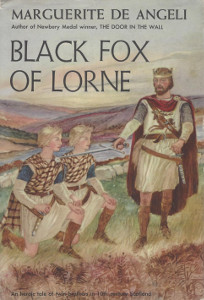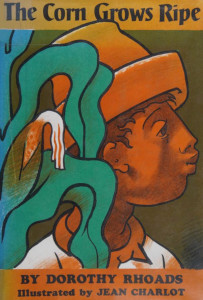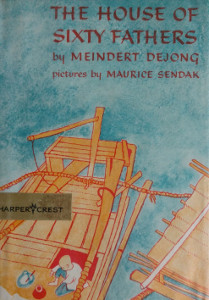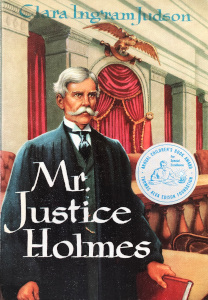< Newbery Medal and Honor Books
Given the Newbery Award's prestige it would be easy to assume that the award winners are all excellent books for children. The Biblioguides Team has not found this to be the case. We always want to provide parents with the information they need to make the best book decisions for their families. With that goal in mind, we've put together a complete list of all medal winners and honor books since inception, and the Biblioguides Review Team is working together to read our way through the winners and to provide a review. Where we have not yet reviewed a book, a description directly from the dust jacket or from the publisher has been provided. In some cases, we have shared a brief synopsis from The Newbery and Caldecott Awards: A Guide to the Medal and Honor Books (1999).
Reviews are the thoughts and opinions of the particular reviewer and do not necessarily represent all members of the team. Reviews will continue to be added as the team reads more of the Newbery books. We hope this list will help you familiarize yourself with the various winners and provide the necessary information to determine which books would be a good fit for your family!
Miracles on Maple Hill
By: Virginia Sorensen
Illustrated by: Beth and Joseph Krush
Medal Winner
NOT REVIEWED
A whirl of smoke from the sugarhouse was the only hint of spring on the snowy day that Marly, Joe, Mother, and Father drove out from the city to open the small farmhouse on Maple Hill. A miracle was happening even as they arrived, according to their neighbor Mr. Chris, the first miracle of the new year when sap begins to rise in the maple trees and it is time to make syrup. Soon the woods and fields around their new home would provide one miracle after another, and Mr. Chris promised Marly that she would see them all.
More than anything, Marly was counting on miracles—not only the ones that would happen outdoors but also the slower, more important kind that happen inside people. The family was moving to Maple Hill in the hope that just such a miracle would occur, for ever since Father had come home from a prisoner-of-war camp, he had been tired and jumpy and cross.
As the weeks went by, the bickering and unhappiness they had known gave way to a growing warmth and understanding. The midnight rescue of a family of foxes, an unexpected visit from the local hermit, and a frantic effort to save the maple-sugar harvest were only some of the events that filled their exciting first year at the farm and drew the four of them together once more.
With rare feeling for the beauties of the changing seasons and with a remarkable gift for characterization, Mrs. Sorensen has written a moving and richly rewarding book. Like Plain Girl and Curious Missie, this story of the miracles Marly discovers at Maple Hill will not soon be forgotten by its readers and will be read again and again.
From the dust jacket
Black Fox of Lorne
By: Marguerite de Angeli
Illustrated by: Marguerite de Angeli
Honor
NOT REVIEWED
"Now we shall go a-Viking," Harald Redbeard announced, and so it was that Jan and Brus, Harald's twin sons, found themselves on the dragon-prowed Raven of the Wind, its striped sails set for England. But storms, ancient enemies of the seafaring Norsemen, swooped down, and in their wake left disaster. Their mother's ship was lost and the Raven was wrecked on the Isle of Skye, stronghold of the giant Scot, Began Mor.
Then Jan and Brus met Gavin, the Black Fox of Lorne, and began the long journey that was to take them across half the wild land of Scotland, in search of their mother and father's murderer.
The story is like a panorama of tenth-century Scotland. Loyal clansmen at war with marauding Picts and invading Englishmen; staunch crofters and kindly shepherds; arrogant, powerful lairds—and among them the young Norsemen, practicing the clever deception that saved their lives. For no one in this strange land knew that there were two boys, identical in appearance, and by the time the secret was revealed, it had served its purpose, and the long quest was ended.
From the dust jacket
The Corn Grows Ripe
By: Dorothy Rhoads
Illustrated by: Malcolm D. Charleson
Honor
NOT REVIEWED
Dionisio was his real name, but everybody called him Tigre—"Jaguar." "The name suits," his mother often said. "His skin is the wild honey color of the jaguar. He is spirited and mischievous and curious."
"And lazy too," his great-grandmother would add. But Tigre was only twelve years old, and very dear to his father and mother. They understood his sleepy, daydreaming ways, knowing that soon enough he would be a man, with a man's work and a man's worry.
How soon they could not have guessed. For Father was terribly injured by a falling tree, and suddenly there was no one but Tigre to be man of the family. On the fearsome night when he went alone through the forest to fetch the bonesetter from the distant head village, Tigre began to grow up.
But The Corn Grows Ripe is more than the story of a boy's momentous year of learning to be a man among his people. It is a story of the people themselves, Maya Indians of the twentieth century living in a village in Yucatán, following the ancient customs and celebrating the traditional festivals of their age-old gods.
And because corn is the most precious thing in the world to the Mayas, and the care of his family's cornfield the most important of Tigre's work, his story is full of the drama of seasons and weather sent by the gods to bless or destroy the crops.
Jean Charlot's beautiful drawings—some of the finest he has ever done—show vividly the strength, dignity, and grace of the Maya people and the fascinating details of their surroundings.
From the dust jacket
The House of Sixty Fathers
By: Meindert DeJong
Illustrated by: Maurice Sendak
Honor
Reviewed by: Diane Pendergraft
Also read and recommended by: Diane Pendergraft, Sandy Hall, Sherry Early
As the setting is developed in the first couple of paragraphs, it might be any typical peaceful opening scene; just a boy sheltering from the rain on a boat with his pets. Except that the rain dripping on the boy’s sleeping pig is coming through a bullet hole in the roof.
During China’s war with Japan concurrent with WWII, Tien Pao, a young Chinese boy, has fled with his family from the invading Japanese. They escape from their burning village on a sampan on the river– Tien Pao, his father and mother, his baby sister, the family pig, a dishpan with three ducklings in it, and a rice mill. For many days and nights, the family rowed the boat against the river’s current until they were safe from the Japanese. But now they are in a strange city with no money or food.
When they arrive at the village of Hengyang, the father and mother leave Tien Pao on the sampan with the pig and ducklings while they go to the American airfield to work. Mother carries the baby sister on her back. The sampan accidentally breaks loose from the river bank, and Tien Pao is carried back downriver, toward the Japanese.
Read full reviewMr. Justice Holmes
By: Clara Ingram Judson
Illustrated by: Robert Todd
Honor
NOT REVIEWED
It was fun to be a boy in Boston in 1850. Oliver Wendell Holmes, Jr., and his friend Henry had wonderful times coasting down Beacon Hill on their sleds in winter and rowing a boat on the Charles River in summer. There were interesting sights at the wharf, too: the strange ships from faraway ports, the foreign sailormen with their queer talk and the gold rings in their ears. There was Donald McKay's shipyard, with the ships a-building; there was the excitement of the launchings, when the great hulls slid down the ways and landed with a mighty splash on the waters of the bay.
As Wendell grew older, there was serious talk in the streets and at the dinner table of Wendell's famous father, the poet and physician, Dr. Oliver Wendell Holmes. Talk of slavery and abolition, of new states being admitted to the Union, of threats of secession, of laws that were out of step with the changing times. Wendell listened to his elders and began reading papers and books—and thought about the law.
Through college days at Harvard and during his military service, Wendell continued to think about the law. When he was mustered out of the army he knew what his life work would be: he would study the law; he would be a jurist.
The work was hard, and success was slow in coming. But gradually Wendell Holmes made his way—lawyer, lecturer, author, professor; then judge of the Supreme Court of his own state, and finally associate justice of the United States Supreme Court.
Justice Holmes never sat on the bench in the beautiful new Supreme Court Building, with its stately columns and the words "EQUAL JUSTICE UNDER LAW" chiselled in granite above them. But his opinions and dissents, long after his death, will continue to shape history and to help obtain what he thought law and the Constitution should provide—the greatest good for the greatest number.
From the dust jacket
Old Yeller
By: Fred Gipson
Illustrated by: Carl Burger
Honor
NOT REVIEWED
When a novel like Huckleberry Finn, or The Yearling, comes along it defies customary adjectives because of the intensity of the response it evokes in the reader. Such a book, we submit, is Old Yeller; to read this eloquently simple story of a boy and his dog in Texas hill country is an unforgettable and deeply moving experience.
The big, ugly, yellow dog showed up out of nowhere one night and stole a whole side of hanging pork, and when Travis went for him the next morning that dog started yelling like a baby before he was touched. Then he got into the spring water with five-year-old Arliss. Travis took an easy hate to Old Yeller, as they started to call him; in fact, he would have driven him off or killed him if it hadn't been for brother Arliss' loud and violent protests. So Yeller stayed, and Travis soon found he couldn't have got along without him.
Pa and Ma and Travis and Arliss lived on Birdsong Creek in the Texas hill country. It wasn't an easy life, but they had a snug cabin that Pa had built himself, and they had their own hogs and their own cattle, and they grew most of what else they needed. The only thing they and the rest of the settlers lacked that year in the late 1860's was cash, so the men decided to get together and drive all the cattle up to the new market in Abilene, Kansas, more than six hundred miles away.
Travis was only fourteen, but he was proud of his new role as the man of the family and determined to live up to his responsibility. It was hard work, too, plowing until his legs ached, chopping wood until his hands were raw and his head was spinning, weeding the garden in the hot sun, toting the heavy buckets up from the spring, and trying to keep his mischievous little brother in line.
But there were pleasant moments, too: his Ma treating him like a man, and deer hunting in the early-morning stillness, and hot summer nights out in the corn patch under the stars with Old Yeller, trying to keep the coons and skunks out of the winter food supply. And there was plenty of excitement, like the fight between the two bulls, and the time Arliss nearly got mauled by the bear, and trying to catch and mark the new hogs. Here the suspense and excitement reach a peak, only to be topped a few pages later when the crazy-sick loafer wolf goes for Ma. Both times it is Yeller who saves them, only the second time it is not lucky for Yeller, as Travis comes to find out. And in finding out, Travis learns just how much he has come to love that big, ugly dog, and he learns something about the pain of life, too.
Old Yeller is a story that will be read and treasured by many thousands for years to come. In a shorter form, this has appeared as a three-part serial in Collier's.
From the dust jacket








